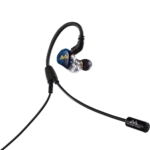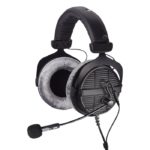Antlion Audio present the Kimura Duo, an in-ear headset that consists of a Kimura microphone cable and high-quality IEMs to meet demanding sound requirements.
Antlion
The latest reviews: Antlion
With the Kimura Solo, Antlion Audio presents an in-ear headset consisting of a Kimura microphone cable and handmade IEMs, which has been specially tuned for gaming.











